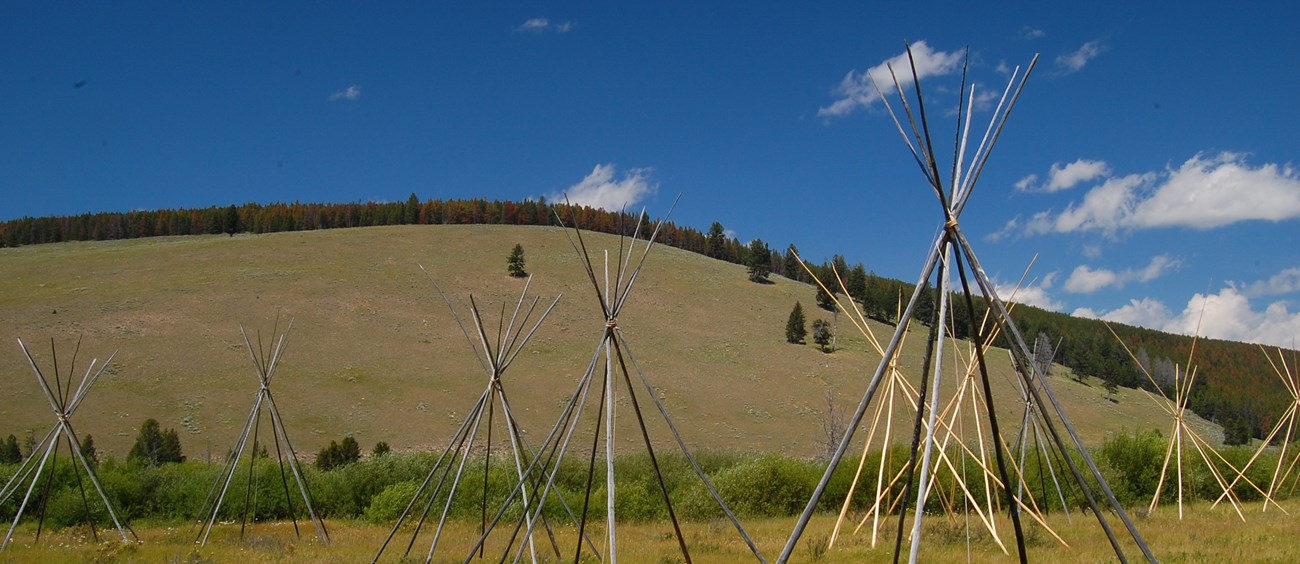
Environmental Setting
Big Hole National Battlefield is located in the high arid foothills of southwestern Montana, with elevations ranging from 6,276 to 7,000 feet and mean annual precipitation averaging only 12 inches per year. The battlefield is located within a patchwork of U.S. Forest Service land and private ranches. The North Fork Big Hole River bisects the site, and the battlefield is flanked by Battle Mountain to the northwest and Ruby Bench along the southeast.
These environmental factors have created a diverse landscape that includes sagebrush uplands, grass and willow riparian areas, and coniferous forest. Five habitat types are represented in Big Hole National Battlefield: altered herbaceous, low/moderate cover grasslands, sagebrush, Douglas fir/lodgepole pine, and shrub-riparian.
Key Resources and Issues
In addition to honoring the memory of those involved in the 1877 battle, Big Hole National Battlefield preserves a healthy array of riparian and wetland habitats, sagebrush steppe and grassland habitats, and upland forest habitats.An important management goal is to maintain the look and feel of the landscape as it was when the battle occurred.
The North Fork Big Hole River flows through the battlefield and sustains excellent examples of riparian and wetland vegetation, including extensive willow stands as well as sedges, rushes, and grasses. In addition to trout populations, these habitats support large mammals such as deer, elk and moose, small mammals such as muskrat and beaver, and amphibians such as the Columbia spotted frog.
The upland areas of the battlefield consist of sandy hillside grassland, sagebrush steppe, and coniferous forest. The grassland areas support the largest known population of the Lemhi penstemon, a regionally endemic flowering plant restricted to eastern Idaho and southwest Montana. Another important flowering plant is the camas lily, whose underground bulbs have been, for generations, a significant food resource for native peoples.
Invasive species, wildfire, land-use changes, and impacts to aquatic resources are all key issues in the battlefield. Invasive species such as spotted knapweed require ongoing management and treatment, and wildfire is a threat to the forested areas and to the historical landscape. Land-use changes and the effects of wildfire can also degrade aquatic resource conditions, including habitat quality for the Arctic grayling, a fish species that may occur in the North Fork Big Hole River—which would be the southern-most extent of its distribution.
Publications and Other Information
Inventory Reports
Source: NPS DataStore Collection 4404 (results presented are a subset). To search for additional information, visit the NPS DataStore.
Monitoring Reports
Source: NPS DataStore Saved Search 712 (results presented are a subset). To search for additional information, visit the NPS DataStore.
Source: NPS DataStore Saved Search 714 (results presented are a subset). To search for additional information, visit the NPS DataStore.
Source: NPS DataStore Saved Search 716 (results presented are a subset). To search for additional information, visit the NPS DataStore.
Source: NPS DataStore Saved Search 720 (results presented are a subset). To search for additional information, visit the NPS DataStore.
Quick Reads
Source: NPS DataStore Collection 4405 (results presented are a subset). To search for additional information, visit the NPS DataStore.
Last updated: August 29, 2018
